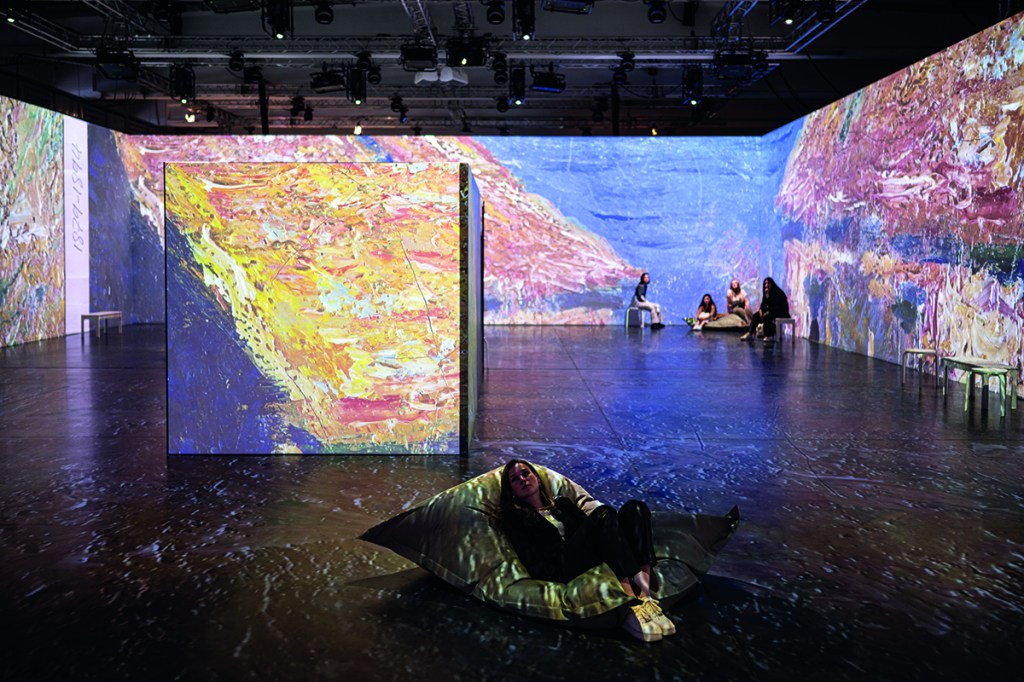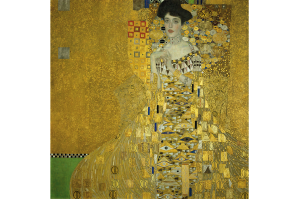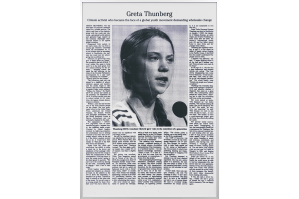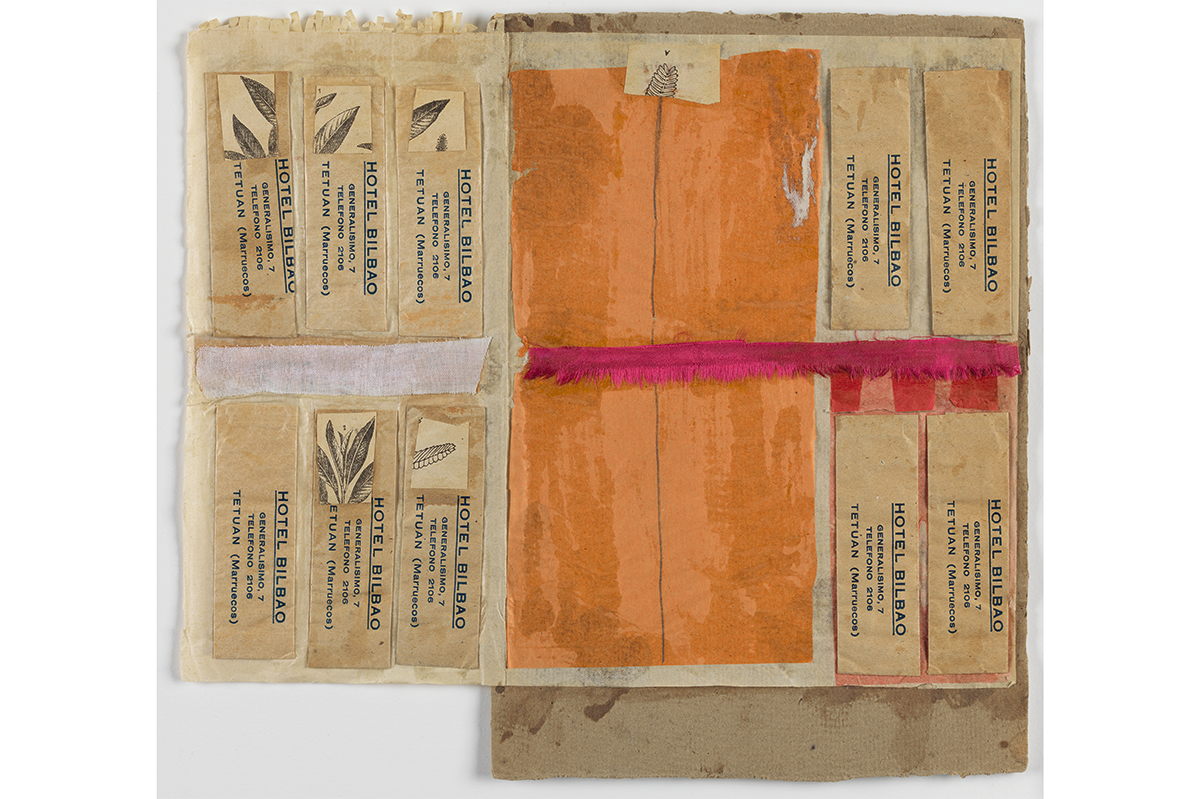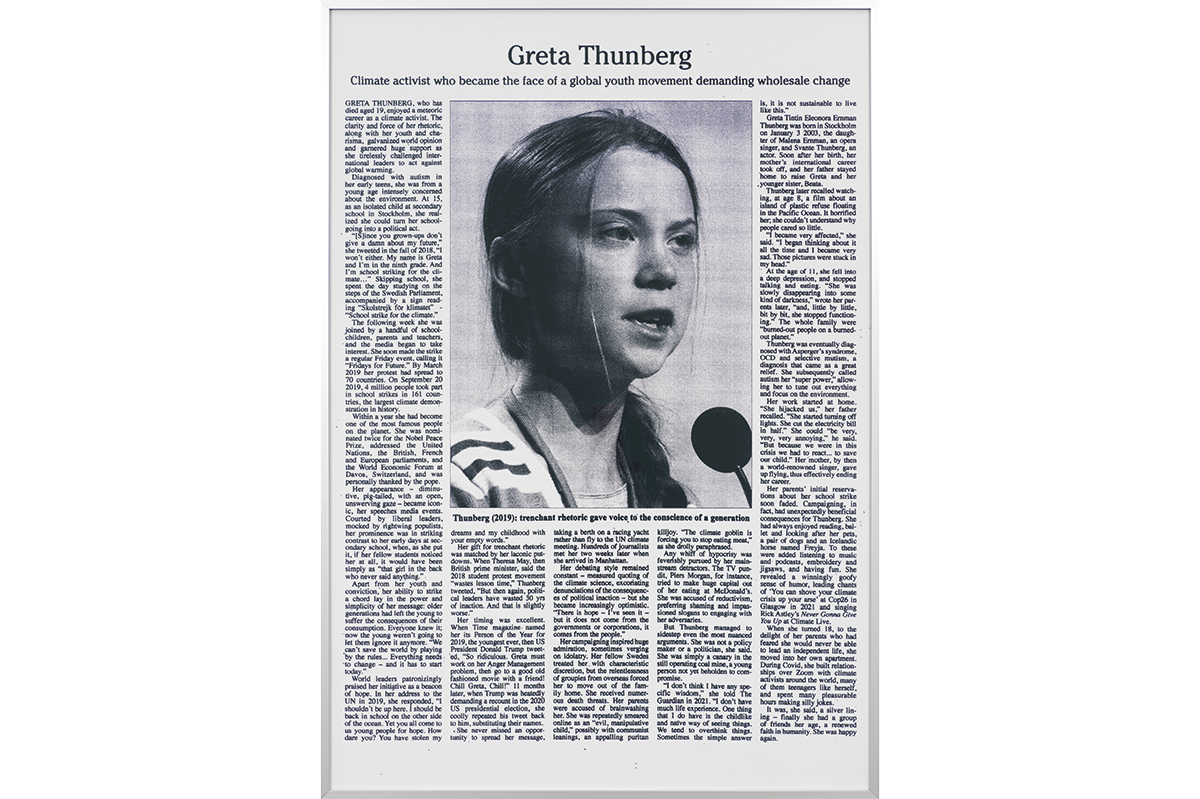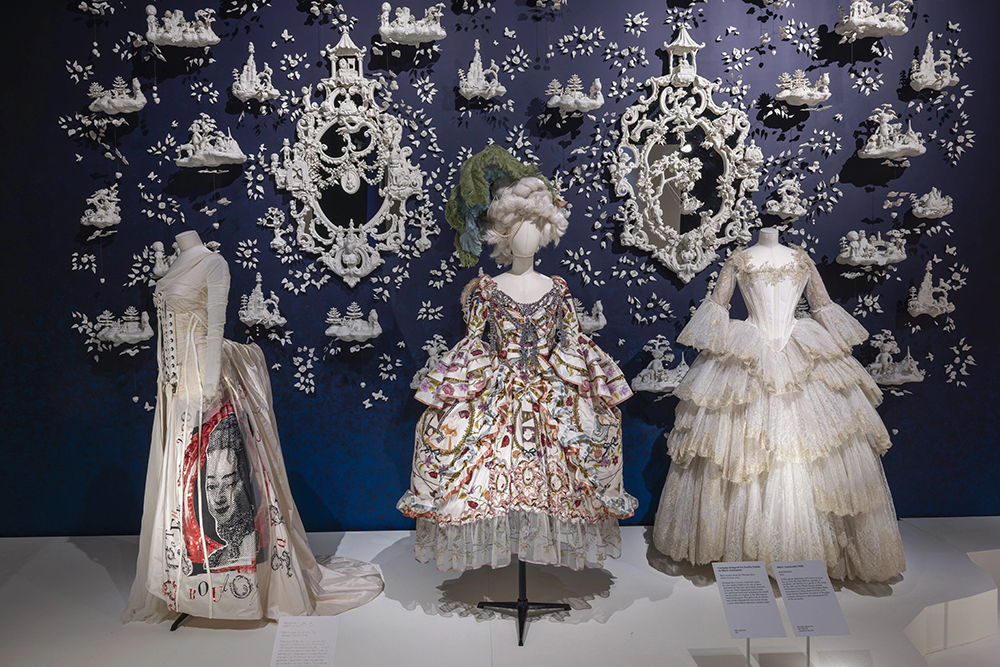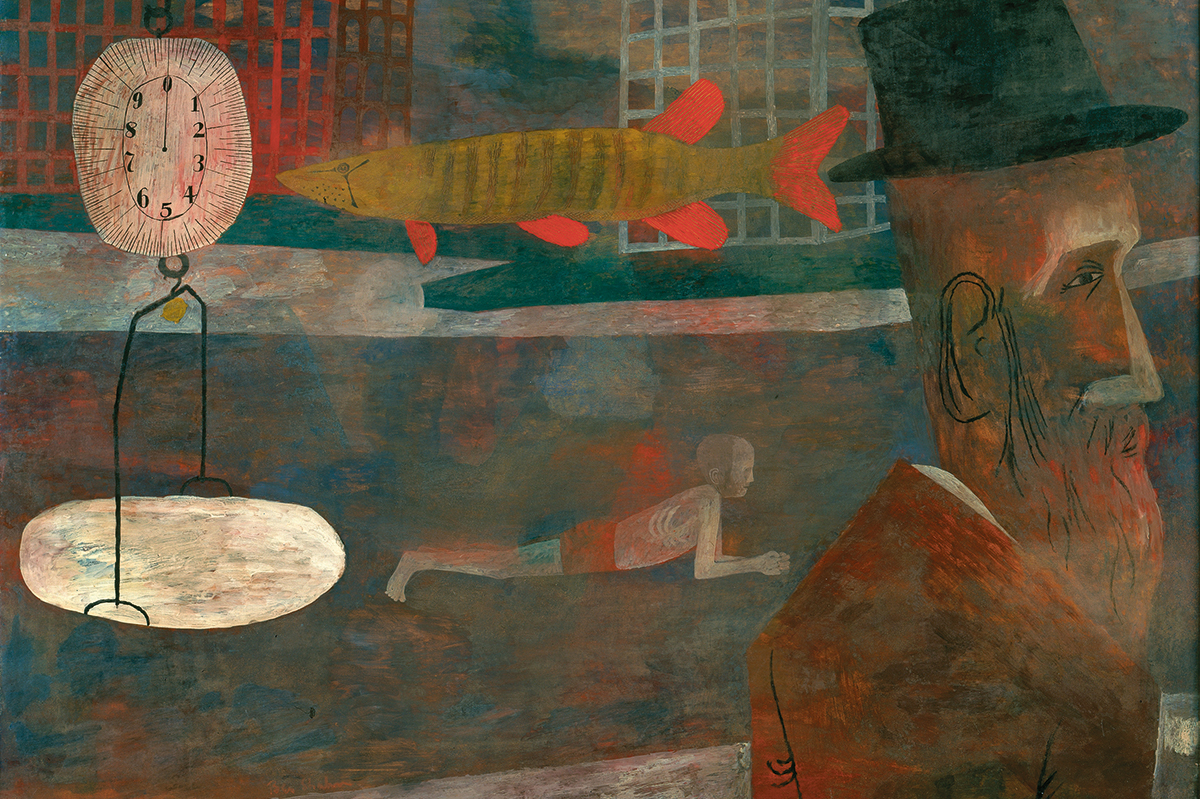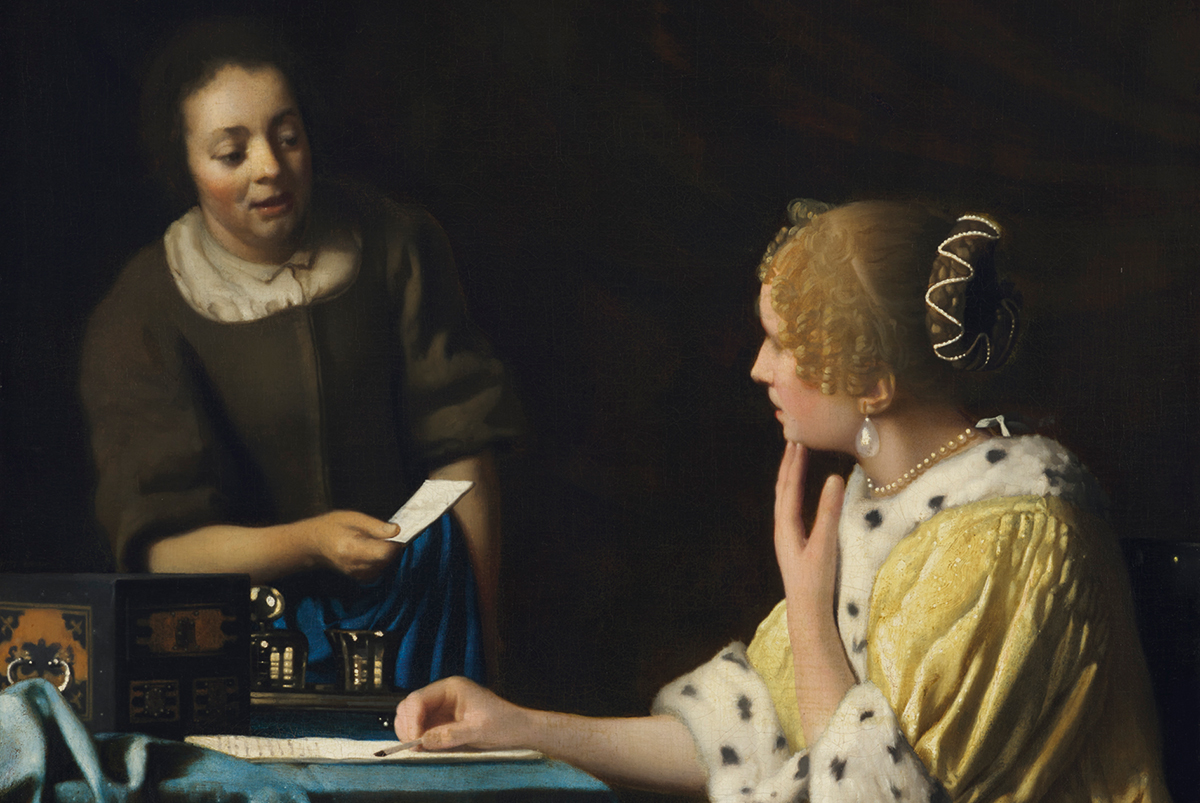There are few topics that rankle the art critic more than “immersive exhibitions.” They must be second only to “nonfungible tokens,” whatever those are. I speak of the immersive spectacles where images of famous artwork are flashed on the walls and floors of a large white room in which you sit. Certainly, this should be outside the remit of my union card, I might think.
Until now, if you were looking for some opinion on this-or-that out-of-copyright projection venue slash tourist trap, I would simply say not my job. Maybe go see the real thing. Then we can talk.
And yet, with art on the walls, real or imagined, judgment always comes calling. Suddenly we seem to be immersed in immersion. It can be a challenge just to keep your head above the digital waters. This season, passing their subway ads and all sorts of other lures, I counted some half-dozen eye-poppers. There is, of course, The Original Immersive Van Gogh Exhibit, created by Massimiliano Siccardi. Visit the website and you will be invited to “choose your city.” Twenty American destinations are in the offing.
The same outfit, I read, also promotes Immersive Nutcracker and Immersive King Tut. Or there is Immersive Frida Kahlo: Her Life, Her Love, Her Art (nine cities for that one). Or how about Gustav Klimt: Gold in Motion, billed as “the first immersive exhibition at New York’s permanent digital art center” called the “Hall des Lumières.” Note that this exhibition should not be confused with Immersive Klimt Revolution, on view in four other cities.
So where to begin? New to these deepening waters, I decided to dip my toes into what was billed as the US premiere of Monet’s Garden: The Immersive Experience. (Kindly do not confuse with Claude Monet: The Immersive Experience, now touring eleven cities.) At Monet’s Garden, I was drawn in by the specter of an “unprecedented range of visual, phonic and olfactory stimuli” that promised a “complete and total immersion into the work and world of Claude Monet (1840-1926).” In particular, Monet’s Garden would be “enhanced by aromas of lavender wafting in the air and the romanticism of classical music to serenade visitors.” Take that, I thought, Museum of Modern Art. If you are going to offer a $47 “VIP FLEX ticket” to see a copy of Monet’s Water Lilies, when the real thing can be yours a few blocks uptown for just $25, at the very least it should smell good.
Monet’s Garden is the work of Immersive Art AG, a “Swiss creative lab,” in cooperation with Alegria Konzert GmbH. Seeing their schedule, it occurred to me that the ability to reproduce immersive shows across many continents simultaneously would make a museum curator shudder as they chase down the next Old Master loan. Maybe Walter Benjamin had it backwards all along. When it comes to the work of art in the age of immersive reproduction, like the taste of a McDonald’s hamburger that remains the same no matter where you go, ubiquity conveys an aura all its own.
The New York venue for Monet’s Garden was an event space at 30 Wall Street, across the street from the New York Stock Exchange. The anonymous environs conveyed the feel of a WeWork in receivership. Immersive shows, like sample-sale outlets and holiday-village markets, must make reliable subtenants for distressed real estate interests. And in fact, the hollowed-out floors of “Monet’s Garden” have a rich history.
In 1823, I discovered, an impressive neoclassical pile was erected here as the Branch Bank of the United States. In the 1850s the building became the US government’s Assay Office, designed to melt and measure the nuggets from the California gold rush. In the 1920s that building was demolished. The site’s last life was as a Seamen’s Bank. All that remains is the long escalator that once brought you to the loan officers on the second floor.
It is here that Monet’s Garden begins. And upon arrival, at first glance it all strikes one as a ridiculous scam. “Welcome to my studio” reads the introductory wall text. Reproduction Monet canvases — “Woman with a Parasol — Madame Monet and Her Son Jean Monet” (1875), from the National Gallery of Art, and “The Lunch in the Garden” (1866), from the Pushkin Museum, both available (I note) in high resolution from Wikimedia Commons — are arranged on easels for our inspection. There are visitor instructions throughout: “Pose,” “Photograph,” “Scan the QR Code,” “Immerse yourself and become part of the painting.”
The walls are covered with synthetic ivy. There is astroturf across the floor. Erik Satie plays. Theatrical lights are everywhere. A bed of fake flowers leads on to an arched Japanese “bridge.” Yes, it is that bridge, but in this case one that merely crosses a video of water projected on the floor. “Please do not jump in the pond,” reads a sign. What pond? For the first-time viewer, it takes more than a moment to understand what this is all for. Meanwhile I observed my fellow visitors — immersive veterans, no doubt — take to it right away.
I doubt these immersive experiences would be so ubiquitous without social media. For here, I came to realize, was the selfie floor — a liminal space presented in advance of the immersive video room. I watched as two millennial visitors, both immaculately kitted out, sought the room’s premier selfie spots. They knew just where to stand for the lights as they passed their iPhones back and forth, taking off their masks, tossing their hair and pouting over their shoulders.
I ended up spending longer here than expected. There were several wall labels featuring a half-decent timeline of Monet’s life. Projections of Monet paintings morphed into swirling pixels, some of which you could control by standing in front of them. Instagram filters were made available for selfie-taking, although I could not get them to work on my phone. But mostly, sitting on a bench, smelling the lavender, taking in the Satie, observing the fake flowers under shifting gradations of LED lights, I began to find the uncanny experience transporting.
Here, in this postmodern garden, I found my peace.
Back down the escalator was the immersive viewing room. I was handed a cushion and took a seat. The video installation cycled for forty-five minutes. I found it held my attention for the duration. The narrative followed the history of Monet through a holo-deck slide show of his paintings. At times, the animators added some motion to the works. The story focused on Monet’s artful construction at Giverny, where he lived for forty-three years from 1883 to 1926, building his famous garden.
The exhibition makes a compelling sensory case that the garden was the original immersive Monet experience. The artist’s opus now in Paris’s Musée de l’Orangerie — his eight monumental panels known as Les Nymphéas arranged in two oval rooms — was the painterly result of this immersive vision. Monet described these panels as “the illusion of an endless whole, of water without horizon and without shore.”
A day after my visit I happened to run across Woman with a Parasol — the real Monet — at Washington’s National Gallery. Did I feel ashamed of my prior day’s digital dalliance? Surprisingly, I did not. Rather, for a moment I sensed we had been immersed in the same nymphean waters. We had shared an “experience” together.
Monet’s Garden is at 30 Wall Street, New York through February 26. This article was originally published in The Spectator’s February 2023 World edition.



